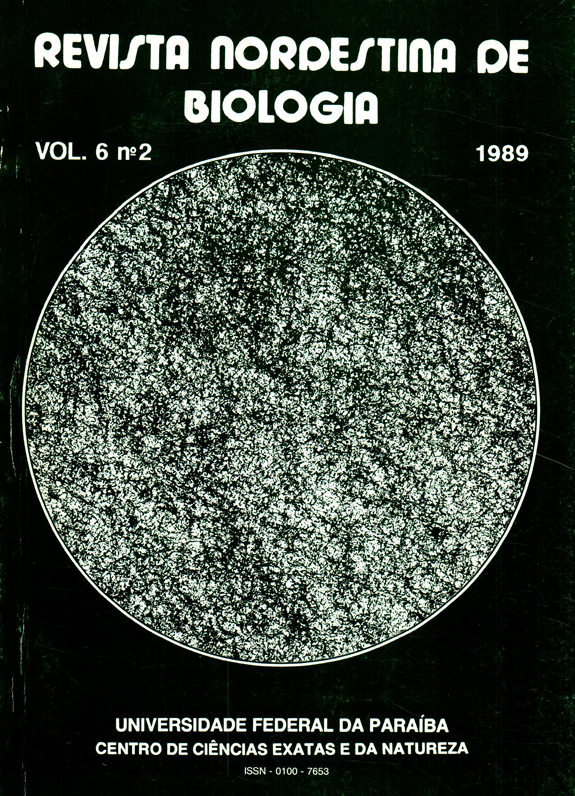ECOLOGIA E COMPORTAMENTO DE <i>CALLITHRIX JACCHUS</i> (PRIMATES: CALLITRICHIDAE) NUMA ILHA DE FLORESTA ATLÂNTICA.
Resumo
Behavioral and ecological data were collected on a group of Callithrix jacchus living in an Atlantic forest island in the campus of the Federal University of Paraíba in João Pessoa, Brazil. Group size varied from five to 10 individuals during the 13 month study period. Twins were born twice each year and were carried by all group members until they were three months old. The group was cohesive and organized in a discrete dominance hierarchy of a female and a male plus a couple of adults. There is a possibility of polyandrous mating with priority for one of the males in mating the dominant female. The home range of the group was estimated to be 4.98 ha and remained constant during the study period. The animals feed on fruits, exudates, arthropods, lizards and eggs. The frequency of exudate feeding from "copiubas" (Tapirira guianensis) was lower during the months in which fruit availability in the forest increased. During feeding, C. jacchus used particular patterns of locomotory behavior that together with its light weight, allowed the exploitation of all forest strata. Although foraging was done in all strata, it was more intense in the understorey. The daily activity pattern was studied, particularly the timing of the beginning of activity, feeding, travelling, resting, grooming, interactions with other groups and the end of the daily activity. Results are discussed comparing them with available data on other callitrichids and looking for correlations between ecological and behavioral characteristics of the species and its environmental parameters. The daily activity pattern is similar to that of other callitrichids, starting the day with an emphasis on fruit consumption followed by an active foraging of animal food interrupted by short fruit feeding and resting periods. A long resting period at noon allowing social activities is followed by an increase in the foraging for arthropods and fruits until sleeping time. Both gummivore species, C. jacchus and Cebuella pytpnaea start and end their daily activities with intense gum feeding. Gum feeding makes these species independent of seasonal availability of energy rich fruits used to launch daily activity and to overcome the long tropical night. Foraging was the acitity with highest frequency and was also recorded at all hours of the day. Gum feeding depends on behavior patterns that, like tree gouging, are deeply anchored in the genome, and are activities without immediate return. Scent marking on gouge holes may be a way of identifying the site of previous gouging activity. Owing to the high energy cost of carrying the large infant, raising of twins is only possible by means of communal caring. Helpers of the dominant couple benefit by inclusive fitness, by parental selection and by reciprocal altruism. By anticipating experience they also benefit in their future reproductive success. Data presented suggest a poliandrous mating sistem with priority access of one of the males. A comunal defense of the territory protects the exudate and fruit resources, which are distributed irregularly in the forest from other groups.Downloads
Não há dados estatísticos.
Downloads
Edição
Seção
Artigos
Licença
Os originais aceitos e publicados tornam-se propriedade da Revista Nordestina de Biologia, sendo vedada sua reprodução total ou parcial, sem a devida autorização da Comissão Editorial, exceto para uso de estudo e pesquisa, desde que citada a fonte.



